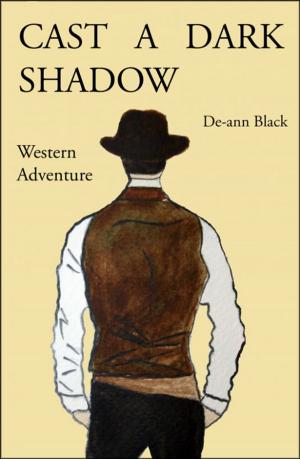| Author: | Colin Small | ISBN: | 9781310887543 |
| Publisher: | Colin Small | Publication: | December 23, 2013 |
| Imprint: | Smashwords Edition | Language: | English |
| Author: | Colin Small |
| ISBN: | 9781310887543 |
| Publisher: | Colin Small |
| Publication: | December 23, 2013 |
| Imprint: | Smashwords Edition |
| Language: | English |
In the late autumn of 1768 in a beautiful but remote part of Highland Scotland, a body is found in a ditch beside a field of stubble. It appears to be the victim of a serious assault. The discovery is reported to the parish constable, who identifies the body as that of a man known locally only as the soldier, a nobody, a hard drinking itinerant worker living rough and surviving by doing odd jobs on local crofts, in return for food and small amounts of money. However, the constable has long suspected the man to be an absconding English soldier and therefore, as such this presents a significant problem. The constable reports the matter to his superior the county sheriff and in turn, the sheriff notifies the military authorities, who suspect the man to have been murdered. Sergeant Moss with his two assistants Corporal Stephen and Trooper Carlisle is sent to confirm the victim’s identity and verify the cause of death. He is instructed to find if possible any evidence he can, to ascertain the circumstances surrounding the savage killing and any indication of who the assailant could have been. When the body is examined by a local doctor, he confirms the cause of death and reports to Moss that during the examination of the man’s clothing, he has found within the pockets, a small quantity of barley. He has no real explanation for its presence, since the barley harvest is long past and thus, is unlikely to have come from the immediate vicinity of where the body was discovered. Nevertheless, he believes the find could be relevant. The presence of the barley within the victim’s clothing is something of a puzzle for Moss, but in time it proves to be an important pointer in the trail of evidence. The sergeant and his men go on to examine the place where the crime occurred, but at first they find more questions than answers. During their investigation, they stumble upon a second body; initially this seems to be unrelated to the first victim. Bit by bit the story begins to unravel, exposing talk of stolen Jacobite gold and a cruel death which had caused entrenched hatred locally and which, for the second murder, provides a possible motif of long sought retribution. But, are the two killings in some way linked? A witness is then uncovered, who gives an elated Moss some firm evidence at last, leading to much needed clarification. When Moss is finally satisfied that he has the solution to the crimes; a sudden and dramatic act takes place, which brings the mystery to a conclusion. Or, it almost does.
In the late autumn of 1768 in a beautiful but remote part of Highland Scotland, a body is found in a ditch beside a field of stubble. It appears to be the victim of a serious assault. The discovery is reported to the parish constable, who identifies the body as that of a man known locally only as the soldier, a nobody, a hard drinking itinerant worker living rough and surviving by doing odd jobs on local crofts, in return for food and small amounts of money. However, the constable has long suspected the man to be an absconding English soldier and therefore, as such this presents a significant problem. The constable reports the matter to his superior the county sheriff and in turn, the sheriff notifies the military authorities, who suspect the man to have been murdered. Sergeant Moss with his two assistants Corporal Stephen and Trooper Carlisle is sent to confirm the victim’s identity and verify the cause of death. He is instructed to find if possible any evidence he can, to ascertain the circumstances surrounding the savage killing and any indication of who the assailant could have been. When the body is examined by a local doctor, he confirms the cause of death and reports to Moss that during the examination of the man’s clothing, he has found within the pockets, a small quantity of barley. He has no real explanation for its presence, since the barley harvest is long past and thus, is unlikely to have come from the immediate vicinity of where the body was discovered. Nevertheless, he believes the find could be relevant. The presence of the barley within the victim’s clothing is something of a puzzle for Moss, but in time it proves to be an important pointer in the trail of evidence. The sergeant and his men go on to examine the place where the crime occurred, but at first they find more questions than answers. During their investigation, they stumble upon a second body; initially this seems to be unrelated to the first victim. Bit by bit the story begins to unravel, exposing talk of stolen Jacobite gold and a cruel death which had caused entrenched hatred locally and which, for the second murder, provides a possible motif of long sought retribution. But, are the two killings in some way linked? A witness is then uncovered, who gives an elated Moss some firm evidence at last, leading to much needed clarification. When Moss is finally satisfied that he has the solution to the crimes; a sudden and dramatic act takes place, which brings the mystery to a conclusion. Or, it almost does.















